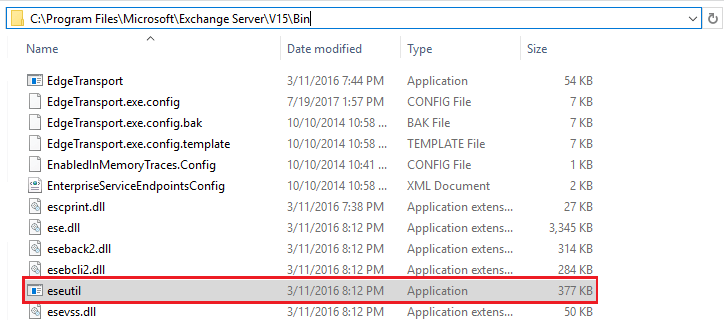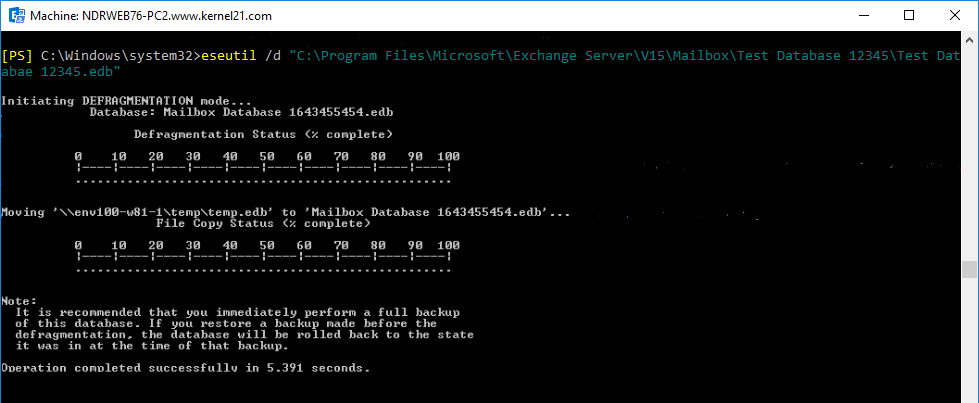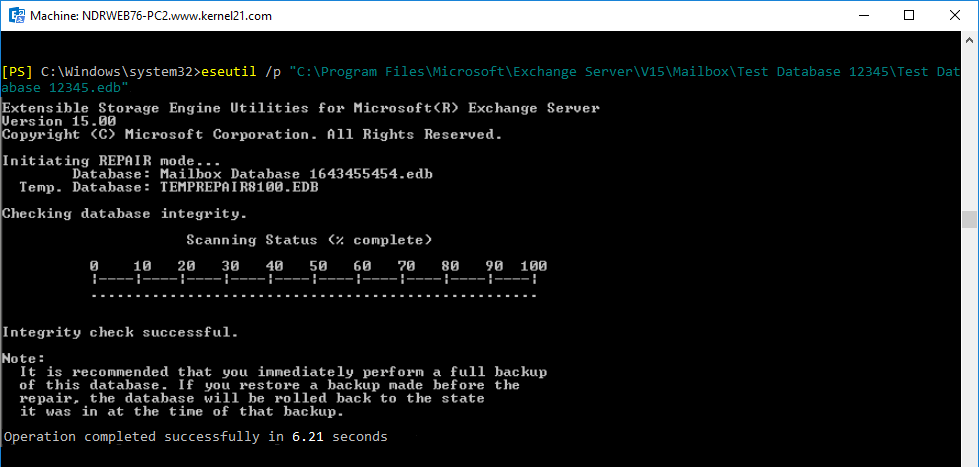

So your Exchange Server database file (EDB format) has been corrupted and you are seeking ways to recover it? Keep reading Let us inform you that you are on the right post.
Microsoft Exchange Server has transformed highly qualified email correspondence in businesses. Regardless of the company’s size, email interaction inside and outside the company has become much more efficient and simple.
Microsoft has added a slew of functionalities to Exchange to ensure that users’ emails are extremely safe. However, numerous concerns are always lurking around, threatening the user database. Such attacks corrupt and render the exchange database unreachable.
Absolutely. Microsoft has provided an in-buit tool that is named “Eseutil”. It is beneficial for repairing corrupted database systems, defragmenting them, verifying the integrity of data, and reducing the size of the database.
But before introducing the features of the tools, we would like to inform you that this is more boring than any other manual approach. Here you need to use some command lines too. Therefore, you must have technical knowledge. If you are okay with all of these, then the processes are below described.
In the indicated image as follows, we have shown the location or destination path of the Eseutil tool. But this location is only for Exchange Server 2013 or 2016 users.

You don’t need to download it from any third-party website or install it on your device. As you have MS Exchange, the utility is by default situated on your device. (Don’t pay anyone to buy this tool!)
Here we have added some commands and command lines that you should know. Take a look at them.
In all of these commands, we will use the first line, which relates to defragment, to fix any database issues and recover data.
Before you start applying the commands, we strongly suggest you keep a backup of your database to avoid unwanted data loss.
Dismount-Database –Identity <name of the database>

Here, instead of “name of the database”, place the name or title of your database here.
eseutil /d <name of the database> /T <location of temporary path>

Here, instead of ‘name of the database’, input your own database name, and instead of ‘location of temporary path’, input your own location path by copying from your device.
Mount-Database –Identity <name of the database>

eseutil /p <location of the database>

Here, instead of the “location of the database,” input your database location path.
New-MailboxRepairRequest -Database <name of the database> -CorruptionType <type of corruption>

Here, instead of ‘type of corruption’, input the corrupted type that has occurred on the database.
However, you can also execute the eseutil/r command to restore your Exchange database. In this way, you may resolve your Exchange server database corruption or related issues. But note that you may need to execute the command multiple times to resolve the entire issue with your database.
As a technically inexperienced person, you may find the steps very hard for you. Don’t you? However, you have an alternative option of using any third-party Exchange Server Recovery tool. We highly suggest using any professional tool or taking help from any experienced person, as there is a huge chance of data loss during use of the Eseutil tool, even if you are experienced.